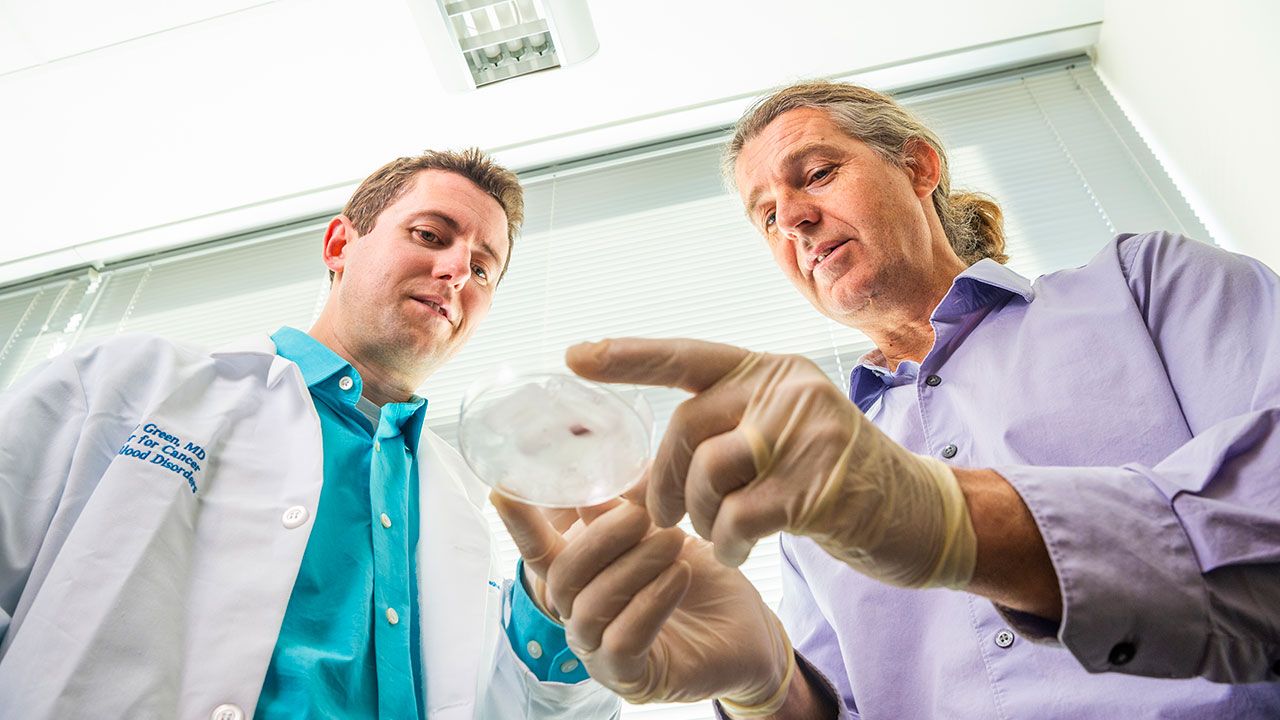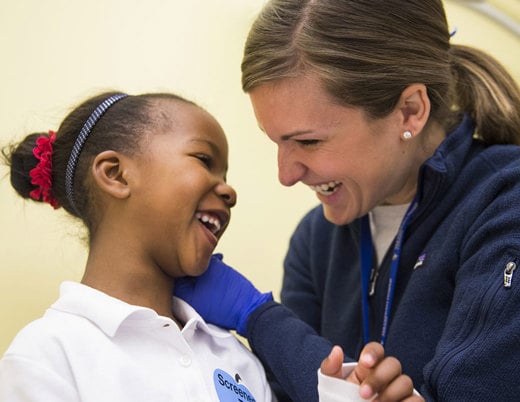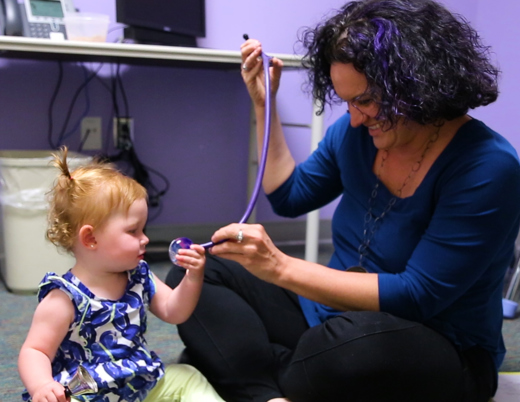Five or ten years out from treatment with traditional chemotherapy and radiation for pediatric cancers like medulloblastoma, lymphoma and leukemia, some patients develop a secondary cancer called a treatment-induced high-grade glioma, or TIHGG. Right now, there's no way to treat them. Working in The Morgan Adams Foundation Pediatric Brain Tumor Research Program, pediatric neuro-oncologist Adam Green, MD, wants to change that.
"TIHGGs are not a recurrence," says Dr. Green. "They're aggressive, invasive secondary tumors that have received little research attention, given that they cause about 4% of pediatric brain tumor deaths. That's a significant number, since brain tumors are already the most common cause of pediatric cancer deaths."
The most effective treatment for tumors is often radiation, but because radiation most likely causes TIHGG tumors, they don't respond to it. Surgery is also not a viable curative option, since TIHGG cells invade healthy tissue. Surgeons must remove a large part of a patient's brain to remove the tumor, and when they've attempted, the tumors return in another part of the brain.
Evaluating risk for treatment-induced high-grade glioma
Dr. Green's team is studying patient germline DNA to understand what consistent factor could make patients susceptible to TIHGG tumors. They recently found a clue: a defect in DNA repair.
"Though we believe many people have this mutation, it only appears to be harmful for some, including those who get an aggressive cancer treatment - like radiation or chemotherapy."
- ADAM GREEN, MD
Radiation and chemotherapy damage DNA. If a cell can't repair itself, that can put a patient at risk for a tumor, in this case, a secondary TIHGG tumor.
"If we can prove efficacy of one of these drugs in preventing PNAC, it will dramatically alter the course of treatment for these infants and children."
A mutation that may increase a patient's risk for a secondary tumor doesn't warrant altering treatment independently. Providers would need to know that the mutation is responsible and how likely it is that it would cause a secondary tumor.
"If this mutation increased risk by a few percentage points, that may not be worth a potentially less effective treatment for a patient's initial cancer," says Dr. Green. "However, if it's a 75% increase in risk, then that may be worth it."
Exploring pathways for treating high-grade gliomas
By studying tumors in Children's Hospital Colorado's tumor bank from the last 20 years, Dr. Green's team has also found that TIHGG tumors fall into two groups based on expression of RNA. One of these groups appears to be driven by NF-κβ, a major oncogenic pathway.
"All cancer pathways have a normal function, but in patients with cancer, they're usually too active or don't respond to inhibitory signals," says Dr. Green. "If NF-κβ is driving the TIHGG in one of these groups, it could be disinhibited."
Dr. Green's team is performing cell line tests to learn how TIHGG tumors respond to proteasome inhibitors, an FDA-approved targeted therapy. Their research has shown that proteasome inhibitors are highly effective at killing TIHGG cells driven by NF-κβ.
The team's next step will be testing this treatment on animal models. But developing models is especially challenging because it involves understanding the situation in which a secondary tumor develops in humans and then replicating it in mice.
They're also combining efforts with St. Jude Children's Research Hospital to gain access to more samples and understand what drives TIHGG tumors.
"When a child who has been cured of cancer develops a secondary tumor, it's tragic," says Dr. Green. "These tumors have been understudied, but our core facilities, scientific know-how and translational experience uniquely position us to advance this research. We hope we can make a difference."
Featured Researchers

Adam Green, MD
Pediatric neuro-oncologist
Center for Cancer and Blood Disorders
Children's Hospital Colorado
Associate professor
Pediatrics-Hematology/Oncology and Bone Marrow Transplantation
University of Colorado School of Medicine





 720-777-0123
720-777-0123










